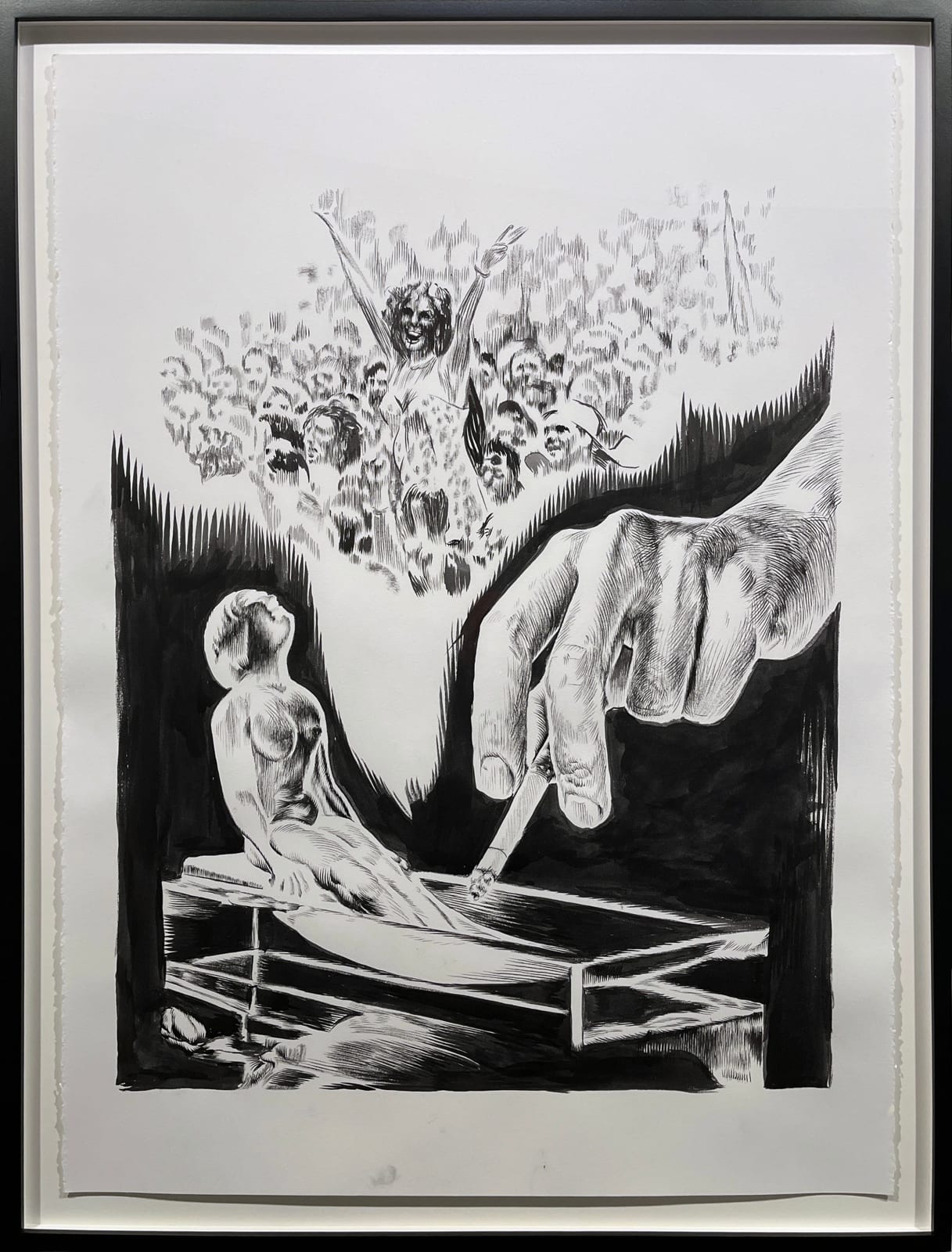
Tim Brawner
Untitled, 2025
ink on paper
20 x 16 in (50.8 x 40.6 cm)
framed: 32 3/4 x 25 in (83.2 x 63.5 cm)
framed: 32 3/4 x 25 in (83.2 x 63.5 cm)
Originally from Omaha, Nebraska, Brooklyn-based Tim Brawner (b.1991) shares this controlled approach, rendering his paintings and drawings with an exacting attention to detail and exquisite mark making. Brawner scours the...
Originally from Omaha, Nebraska, Brooklyn-based Tim Brawner (b.1991) shares this controlled approach, rendering his paintings and drawings with an exacting attention to detail and exquisite mark making. Brawner scours the internet and other analog sources for material, collecting it in a “morgue” file of reference imagery he uses to develop drafts of his paintings. Influenced early in his career by masters of dark humor comics like Al Columbia; the films of Paul Verhoeven, Sam Peckinpah, and Takashi Miike; and the stories of H.P. Lovecraft and Thomas Ligotti; Brawner adroitly composes single panels that capture an instant of terror while alluding to a more sinister narrative lurking just outside the frame. Both drawings and paintings exhibit the compositional focus of a film or theater set, with the latter’s close cropping and unusual angles adding to their discomforting voyeurism and atmospheric unease.
Nothing in Brawner’s universe is quite as it should be. Much as Grünewald in his Isenheim Altarpiece—and later, George Grosz and Otto Dix in their paintings—ghoulishly distorted subjects in response to social and political turmoil, Brawner points to a certain skepticism and destabilization inherent in late capitalism and, especially, the rapid proliferation of a synthetic aesthetic. He realizes his hyperrealistic scenes using a blend of airbrushing, overpainting, and stippling that occasionally dissolves into glitchy optical confusion: simulacra has overtaken the real.
Nothing in Brawner’s universe is quite as it should be. Much as Grünewald in his Isenheim Altarpiece—and later, George Grosz and Otto Dix in their paintings—ghoulishly distorted subjects in response to social and political turmoil, Brawner points to a certain skepticism and destabilization inherent in late capitalism and, especially, the rapid proliferation of a synthetic aesthetic. He realizes his hyperrealistic scenes using a blend of airbrushing, overpainting, and stippling that occasionally dissolves into glitchy optical confusion: simulacra has overtaken the real.
MAILING LIST SIGN-UP
By completing this form, you confirm that you would like to subscribe to DAVID NOLAN’s mailing list and receive information about exhibitions and upcoming events. Your email address will be used exclusively for the mailing list service.
* denotes required fields
We will process the personal data you have supplied to communicate with you in accordance with our Privacy Policy. You can unsubscribe or change your preferences at any time by clicking the link in our emails.
